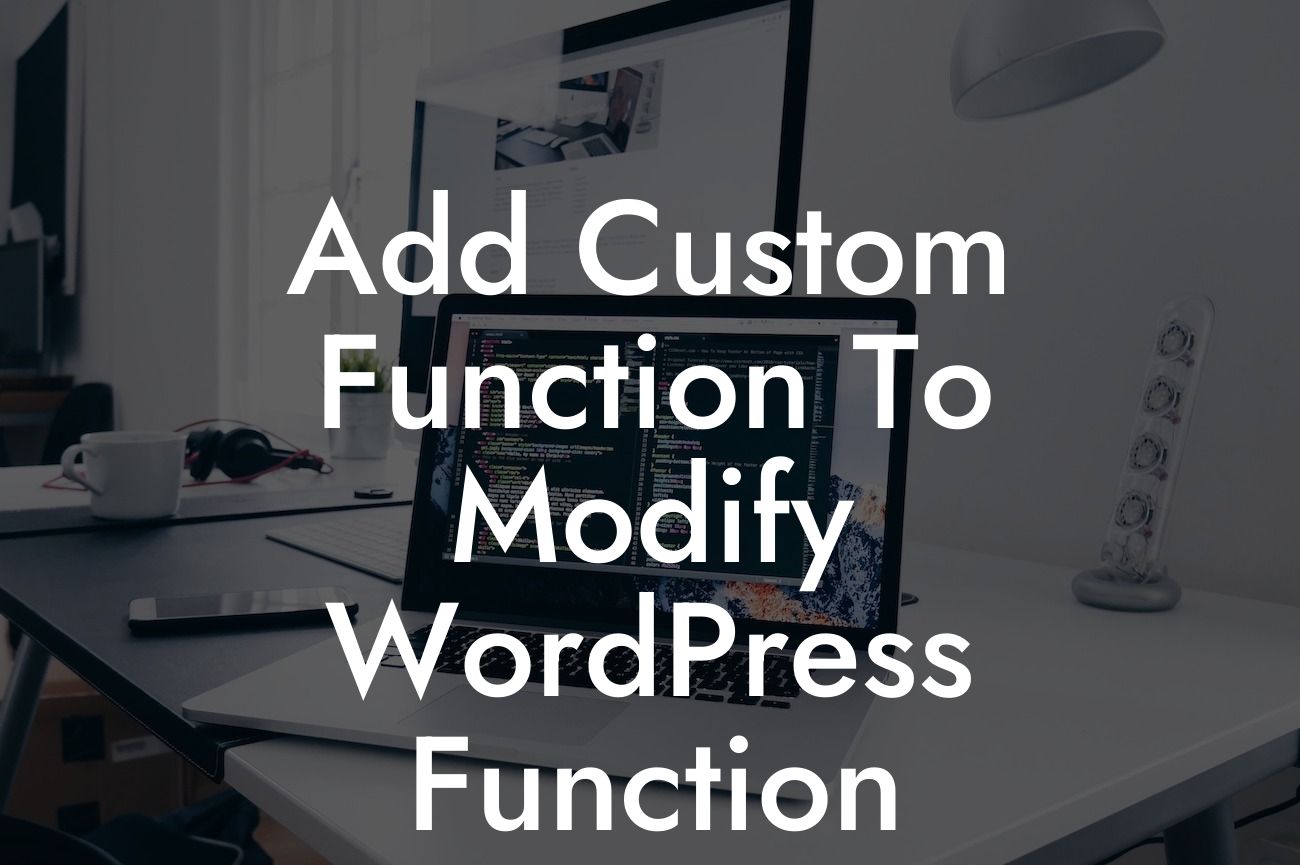WordPress is a popular content management system that offers great flexibility and customization options for its users. While it provides numerous built-in features, sometimes you may find the need to modify WordPress functions to cater to your specific requirements. In this blog post, we will guide you through the process of adding custom functions to modify WordPress functions, allowing you to enhance your website's functionality and take your online presence to the next level.
Adding custom functions to modify WordPress functions may sound intimidating, but with a little understanding, it becomes a powerful tool in your hands. Let's break down the process into simple steps:
1. Identify the Function: Start by identifying the WordPress function that you want to modify. Whether it's changing the appearance of a specific element, altering the behavior of a function, or adding extra functionalities, knowing which function to modify is crucial.
2. Create a Child Theme: Before making any modifications, it's essential to create a child theme to ensure that your changes don't get overwritten when you update your WordPress theme. A child theme acts as an extension of the parent theme and allows you to modify its functions without interfering with the original code.
3. Writing the Custom Functions: Once you have set up a child theme, you can start writing your custom functions. You can do this by locating the functions.php file of your child theme and opening it in a text editor. Here, you can add your custom function using the correct syntax and code structure.
Looking For a Custom QuickBook Integration?
4. Testing and Debugging: After writing your custom function, it's crucial to test and debug it to ensure it works as intended. WordPress provides various debugging tools and plugins that can help you identify and resolve any issues that may arise from your modifications.
Add Custom Function To Modify Wordpress Function Example:
Let's consider a realistic example where you want to modify the login page logo in WordPress. By default, WordPress displays its logo on the login page. However, you may want to replace it with your own logo to match your brand's identity. To achieve this, you can create a custom function that hooks into the login_head() function and replaces the default logo with your desired logo.
Congratulations! You've learned how to add custom functions to modify WordPress functions. By utilizing this powerful technique, you can tailor WordPress to your specific needs and elevate your online presence. Don't forget to explore other guides on DamnWoo for more WordPress tips and tricks. And if you want to supercharge your website's success, try out one of our awesome WordPress plugins designed exclusively for small businesses and entrepreneurs. Share this article with others who may find it useful, and let us know your thoughts in the comments section below.













